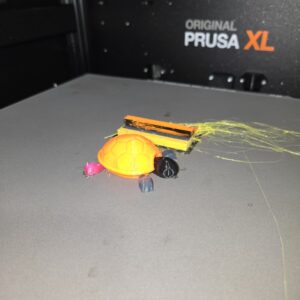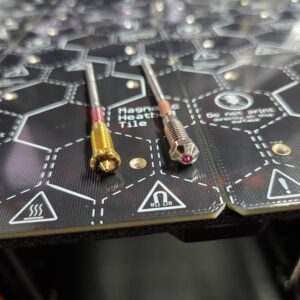Prusa XL: Multi-Material 3D Printing Made Easy!
⚓ p3d 📅 2025-08-18 👤 surdeus 👁️ 10Disclosure: The XL was provided to me by Prusa free of charge for the purpose of this review. I have not received any other compensation. All opinions expressed are my own, and Prusa has had no influence on the content of this review.
The filament was provided to me by Polymaker free of charge for the purpose of this review. I have not received any other compensation. All opinions expressed are my own, and Polymaker has had no influence on the content of this review.
Unboxing
The unboxing of the the XL was an expected delight. Prusa thoughtfully and methodically packaged every component very neatly. I was not fully prepared for the sheer quantity of boxes and packaging components for the 5 Tool variant I was sent. It was daunting, and impressive at the same time. Every tool and component set was packaged in individual boxes and were very clearly labeled.
Packaging Quality
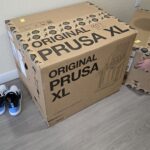
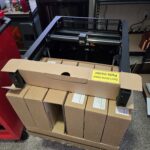
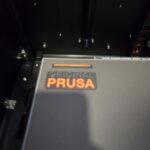
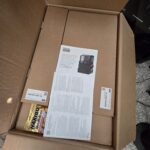

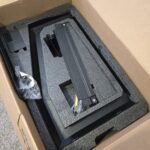
Assembly/Build Quality
This is an interesting component to the XL. The printer I received was fully assembled, minus the enclosure. The toolheads and mount were also not pre-assembled, though each toolhead was put together and in its own box. With that being said, it was super easy to follow Prusa’s instructions to correctly put the toolheads on the XL.
The enclosure add-on was a different story. The enclosure comes completely disassembled. It’s a mixture of laser-cut and bent sheet steel that is very nicely powder coated. While it is easy to assemble, the enclosure take a substantial amount of time to put together. For me, it took me ~2 hours to assemble everything, get it attached to the XL, and up and running.
First Print and Impressions
My first print on the XL was a very ambitious 5 color PETG turtle, and I first tried using Orca Slicer. I made a number of incorrect assumptions, including trusting the Orca Slicer profile to work right off the bat. With that, I downloaded PrusaSlicer and tried again. With PrusaSlicer, I have had nothing but success in my printing.
Hardware and Specs
The Prusa XL has some different configurations. There are semi-assembled and assembled versions of the XL, and either of those can be purchased with just a single toolhead, but up to 5 toolheads. All of the versions will have the same 360x360x360mm build volume, where the print bed temperature is maxed out at 115°C and the nozzle has a max temp of 290°C.
Software and UI
Prusa is vertically integrated in hardware, electronics, and software. This works very well, as the control over every component is awesome. But, for me personally, I am not a fan of the user interface that Prusa has chosen to use. This is the reason I chose Orca Slicer in the beginning. I don’t like how PrusaSlicer is arranged. The slicers work the same because Orca is based on Bambu Studio, which itself is based on PrusaSlicer, which is based on the Sli3r base slicer. So, it’s all a matter of UI preference. The UI of the printers is very familiar, but beginning to feel a bit dated with all of the new generation CoreXY touchscreens.
Test Prints and Performance
Print Examples
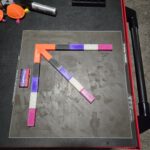
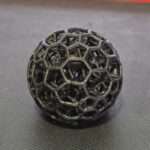
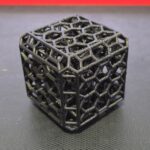
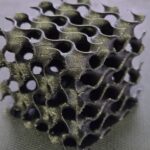
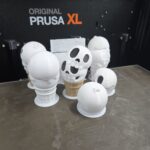
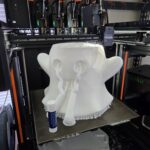
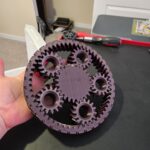
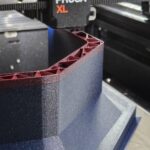
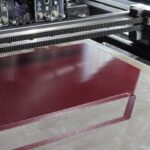
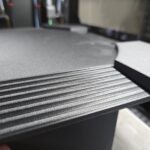
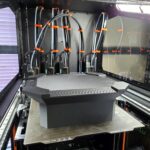
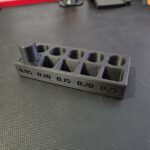
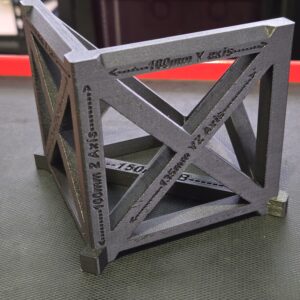
Accuracy Test Results: X Measurement: 100.01 of 100mm Y Measurement: 100.02 of 100mm Z Measurement: 100.00 of 100mm XZ Measurement: 135.01 of 135mm YZ Measurement: 135.01 of 135mm XY – A Measurement: 150.02 of 150mm XY – B Measurement: 150.01 of 150mm
Actual Print Speed
Prusa advertises the XL with “Speed being nothing without quality”. While the XL is not the fastest printer (average 120mm/s in my testing), it is one of the nicest quality printers I have used. That being said, the speed is still faster than many existing printers.
Actual Material Capabilities
The XL is marketed as being compatible with “PLA, PETG, Flex, PVA, PC, PP, CPE, PVB and when using the Original Prusa Enclosure with filtration add-on ABS, ASA, HIPS, PA.” I agree with this list. I have had success with most of the materials listed, but I did not test HIPS, PP, or PVB. Though, with all the success I had, I have no doubt the XL would be able to handle those just as well.
Speed vs Quality
Like I previously mentioned, Prusa is prioritizing quality over speed. With the slower print speed, I have achieved a perfect accuracy and tolerance test. All parts matched the nominal dimension exactly. This is a preferable tradeoff for me personally, since I send parts to others for whom mechanical performance is most important. Quality isn’t about aesthetics, but good aesthetics can correlate with great mechanical quality.
Noise Level
The XL is one of the quietest printers I have used recently. Very similar to the Core One, the XL averages 55dB and peaks around 64dB when it moves rapidly. The Core One is still quieter than the XL, but both are very easy to have operating in the same room in which you are working.
Reliability and Maintenance
I have had 2 nozzles clog from heat creep since I have had the XL. With the Nextruder nozzles, this is really no issue since it take 5 minutes to change them out. One minor annoyance in this regard that comes with the tool changer territory, you have to recalibrate the location of the hotend in relation to the others. This process is easy, but adds an additional ~20 minutes to the nozzle replacement process.
Calibration of 1 nozzle.
I want to add that the Prusa XL comes with standard brass nozzles, and I don’t agree with this. In a modern era of carbon and glass fiber reinforced filaments becoming more popular, I really think the XL should come with hardened steel nozzles as a minimum. I think it would be novel if the XL could come with tungsten or even diamond tipped nozzles. On my XL, I upgraded all 5 of the nozzles to Ruby tipped nozzles so that I could print a lot of carbon fiber reinforced materials.
Cost and Value
The XL ranges from $1,999 to $4,000. The cheapest option is the kit with a single toolhead, without the enclosure. The most expensive is the assembled 5 toolhead and enclosure kit. Personally, I think the best value comes from the latter option. With the 5 tools, you gain maximum functionality with minimal time spent building and double-checking that everything is working. While the XL doesn’t provide the best value when compared to other printers on the market, the true value comes from the independent toolheads. The ability to print with 5 different materials opens up a lot of options and includes the ability to use specialized support materials.
So, who is this for?
The XL is for the serious maker, engineers who need more material properties in the same print, or anyone with prints so complex they need to use specialized support materials such as the soluble ones. Getting multiple materials to work in the same print is not for novice printers. The XL is a proper professional tool that can create some amazing parts. Prusa minimized the barrier to entry for multi-material prints with the XL, and even adds capability when compared to companies like Raise 3D, and even Stratasys where they can only have 2 materials in the same print.
Pros
- True multi-material capability, up to 5 options
- Significantly less waste when changing materials or colors
- Accuracy
- Quiet operation
Cons
- Cost
- Complexity
- Size
- Brass nozzles
Summary
The Prusa XL impresses with its meticulous packaging, though the 5-toolhead variant’s numerous components and 2-hour enclosure assembly can be daunting. Initial printing with Orca Slicer faced issues, but PrusaSlicer ensured consistent success, highlighting the printer’s robust software integration despite a dated UI. With a 360x360x360mm build volume, it supports diverse materials like PLA and PETG, prioritizing quality over speed at 120mm/s and achieving perfect accuracy in tests. The XL is quiet (55–64dB) and reliable, though nozzle clogs require recalibration, and brass nozzles are less ideal for modern reinforced filaments. Priced between $1,999 and $4,000, it offers strong multi-material capabilities for users valuing precision, but its cost and complexity may deter some.
Cover image courtesy of Prusa
🏷️ p3d_feed
